All pegs break!

Capital flows have shifted. They are heading from the periphery back to the core. It’s a rotten core but it’s the only core we have. That core for the time being is the greenback. It is happening in fits and starts but across almost every currency cross you care to track.
Going back to late last year the tell tale signs of volatility levels at extreme lows, coupled with on the ground reports of slowing capacity made for interesting investigation. It was as if market participants – all of them – had been slipped a tab of acid. Everything was linear and risk was nowhere to be seen. I remember it vividly from the conversations I was having with Brad. It was on the 2nd of October last year that he said this:
Expressing bearish views on the Singapore dollar is a great way to position for rising rates in the US and any crisis that is likely to materialize from rising rates. The preference is to express the view via long term call options on the USD/SGD.
At that time we recommended to buy September 2015, 1.30 SGD strike USD/SGD call options at $0.0148. The current price is $0.0645 which equals to 336% return.
 USD/SGD spot (red arrow illustrates the timing of our trade call)
USD/SGD spot (red arrow illustrates the timing of our trade call)
Then on the 2nd of December we went short the renminbi. We detailed all the reasons why here and below is the chart:
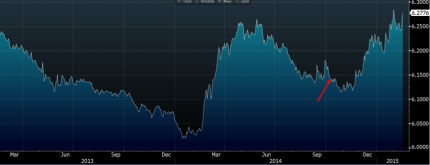 USD/CNH spot (red arrow illustrates the timing of our trade call)
USD/CNH spot (red arrow illustrates the timing of our trade call)
While we believe we’re heading into a sustained US dollar bull market the real profit potential lies in the pegged currencies.
When you peg a currency what you’re doing is effectively underwriting risk. The central bank is drawing a line in the sand. They’re saying, “You can’t cross this line because we’ll hold this line.” Traders can bet all they like with this underwriting. They can leverage and arbitrage opportunities across economies. The problem comes when capital moves against the peg. It becomes overwhelming and the peg collapses.
Let’s now take a brief look at past experiences with pegs.
When you get married it costs money. And when you get divorced I’ve heard it costs a whole lot more.
When a currency peg is put in place it costs money. When it comes undone it costs a whole lot more. The marriage has been consummated but the relationship is untenable. Now we await the very expensive divorce. All pegs break and we’re heading into a period of increased volatility. Volatility is rarely good for currency pegs. Money will be made…
– Chris
“Everything has to come to an end, sometime.” – L. Frank Baum, The Marvelous Land of Oz

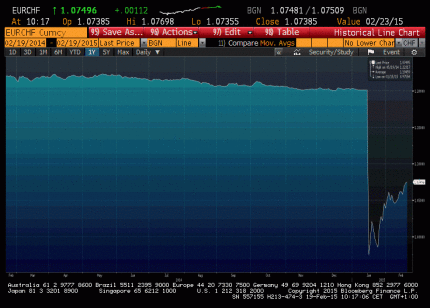
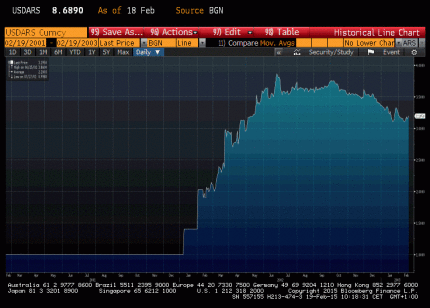
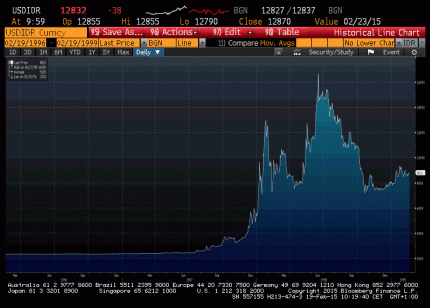
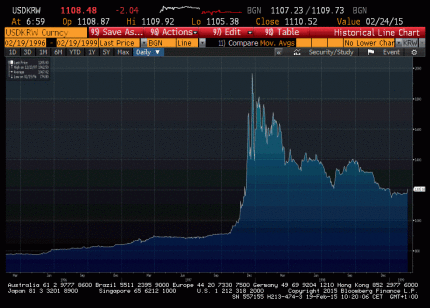
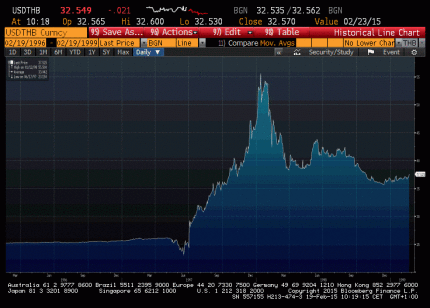


This Post Has 35 Comments
You mention the Yuan peg as vulnerable and the USD/YUAN option trade as the way to express it. I wonder what your thoughts are on the HKD peg.
Good article, you mentioned the use of options, may I know where can I access such options? ie platforms or brokers etc. Thanks